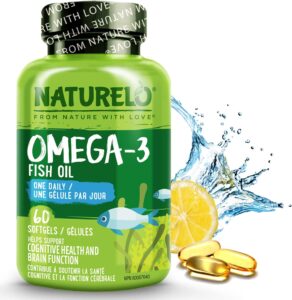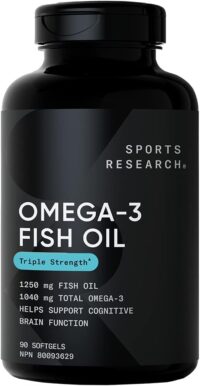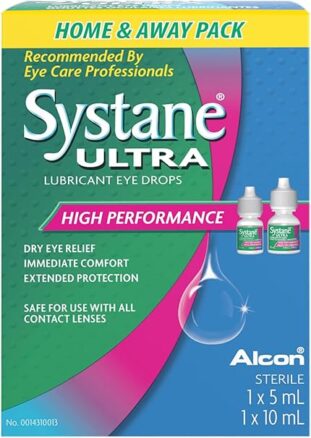Aging eyes often need a little extra TLC if you want to enjoy them. Explore the best dry eye relief methods you can adopt to maintain clear, vibrant vision well into their golden years and stay comfortable and healthy.
If you’re tired of dealing with that pesky dryness, itchiness, and irritation of that constant itch and discomfort in your eyes, you’re in the right place.
From simple lifestyle tweaks to innovative treatments, discover the best methods to keep your eyes feeling refreshed and rejuvenated.
Whether you’re a seasoned senior or just starting to notice the changes, these tips will help bring you lasting relief and clarity. Get ready to say goodbye to dry eyes and hello to a more comfortable, hydrated view of the world!
This article looks at the best dry eye relief methods you can adopt as you age.
Facts about Dry Eyes
Although dry eyes are a common condition, they can interfere with daily activities like reading and driving. However, most people can get significant relief through simple modifications in their usual routines and the use of inexpensive products available at any drugstore.
Common Condition: Dry eyes affect millions of people worldwide, particularly those over the age of 50, making it a common issue among older adults.
Causes: Dry eyes are created by insufficient tears or an imbalance in the quality of your tears causing them to evaporate too quickly. Either way, your eyes need more lubrication.
Risk factors: Dry eyes become more common with age, especially for postmenopausal women. Some medications also increase the risk, including antihistamines, birth control pills, and antidepressants.
Other factors include certain diseases, hormonal changes, environmental conditions, and prolonged screen time.
Impact on Daily Life: If left untreated, dry eyes can significantly affect daily activities like reading, using digital devices, and driving, especially at night.
Treatment Options: Treatments range from artificial tears and lifestyle changes to prescription medications and procedures like punctal plugs.
Preventive Measures: Preventive steps include staying hydrated, using a humidifier, taking regular breaks from screens, and protecting eyes from wind and dry air.
5 Common Diseases Requiring Dry Eye Relief Methods
Several diseases are associated with dry eyes. 5 of the more common ones are:
Rheumatoid Arthritis: An autoimmune disorder that can cause inflammation in various parts of the body, including the eyes, resulting in dry eyes.
Diabetes: High blood sugar levels can damage the nerves in the eyes, reducing tear production and causing dry eyes.
Thyroid Disorders: Conditions like hypothyroidism and hyperthyroidism can affect the tear glands and lead to dry eyes.
Lupus: An autoimmune disease that can cause inflammation and damage to various body tissues, including the tear glands, leading to dry eyes.
Parkinson’s Disease: Neurological disorders like Parkinson’s can reduce the blink rate, leading to less tear distribution and dry eyes.
Recognize the Symptoms
Do you frequently experience irritation in your eyes, a sensitivity to light and blurring of vision? Do you sometimes suddenly feel that there is something in your eye? Do you notice more mucus?
These are just a few of the symptoms of dry eyes. An extended list is provided below:
- Sensitivity to Light: Increased sensitivity to bright light or glare.
- Redness: Noticeable redness in the white part of the eyes that does not go away.
- Itchiness: A persistent urge to scratch your eyes.
- Gritty Feeling: A sensation of having sand or grit in the eyes.
- Stinging or Burning Sensation: A common feeling of irritation in the eyes.
- Mucus: Mucus in or around the eyes.
- Blurry Vision: A temporary blurry vision that often improves with blinking.
- Watery Eyes: Your eyes may tear up unexpectedly as they try to protect themselves.
- Difficulty Wearing Contact Lenses: Discomfort or difficulty wearing contact lenses.
- Fatigue: Eye fatigue, especially after reading, using digital devices, or driving.
The Best Dry Eye Relief Tips
If you are looking for the best dry relief methods, understand that the same methods may not be effective for everyone. The reason is obvious – the underlying causes may be different, so it is always best to talk to your healthcare provider for a better understanding.
If however you are one of the suffering masses as a result of aging or too much screen time, then these tips are for you!
Natural Relief for Dry Eyes
Rest your eyes: Take frequent breaks from computer work or reading to close your eyes, or look into the distance for a few seconds. Position the focal point of your computer screen an inch or two below eye level so your eyes will stay a little less wide open.
Hydration: Drinking 8-10 glasses of water daily helps maintain tear production and reduces dry eye symptoms.
Use Warm Compresses: Using warm compresses helps to unblock oil glands in the eyelids, improving tear quality and providing relief from dry eye symptoms. Apply a warm, moist cloth to closed eyes for 5-10 minutes daily.
Use artificial tear drops: Nonprescription eye drops are the first line of defense. Experiment with different brands or talk with your doctor to find the right formula for you.
Improve your diet: Studies show that foods rich in omega 3 fatty acids and vitamin A help keep your eyes lubricated.
Eat more tuna and other fatty fish. Consider taking omega-3 supplements if you are not eating enough of these foods regularly.
Also, take in plenty of canola oil, soybeans and walnuts. Good sources of vitamin A include carrots and broccoli.
Protect your eyes from contaminants: Quit smoking and avoid second hand smoke. Wear wrap-around sunglasses on windy days. Keep fans and hair dryers turned away from your eyes.
Ask your doctor about prescription drugs: If none of the previous methods are providing the best dry eye relief you seek, ask your doctor about a prescription drug that is right for you.
Restasis is a prescription medication that has been proven to help increase tear production in people with chronic dry eye disease.
It works by reducing inflammation in the eyes, allowing the tear glands to produce more natural tears. Topical steroids may also be used in some cases.
Most Important Tip for Natural Relief for Dry Eyes
Consistency! Consistency! Consistency!
No matter what you do – eye exercises, dietary changes, protection from environmental contaminants, or the use of nonprescription or prescription drugs, if you are not consistent, you will not get the much needed relief you seek. Be consistent!
Medical Options for Chronic Dry Eye Relief
These options may be recommended by your healthcare provider:
Temporary or permanent punctual occlusion: This simple and painless procedure plugs the duct where tears go to drain.
For people with chronic symptoms, this can be more convenient than constantly reapplying eye drops.
Surgery: Closing the tear ducts permanently is a safe outpatient procedure. Even if you do elect to undergo this surgery, you will usually be able to resume normal activities almost right away.
For Best Relief for Dry Eyes – Use Eye Drops Correctly
Do you know that not applying your eyedrops correctly may cause unwanted additional eye infection? Learn to apply your eyedrops correctly.
Avoid infection: Wash your hands first. Avoid any contact between the applicator and your skin.
Strive for ease instead of precision: Eye drops will create a struggle if you try to make a direct hit on your eyeball. Instead, tilt your head back and gently pull down your lower eyelid. That will create a pocket where you can insert a drop with ease.
Maximize the effectiveness of eye drops: After an application of eye drops, close your eyes and press gently on the lower and upper eyelids to help the liquid bathe your eyeballs.
This helps keep blinking and exposure to air from drying up the drops you just put in.
Conclusion – Best Dry Eye Relief Tips
Over the counter eye drops and simple lifestyle changes are enough to put an end to dry eyes for most people.
However, if you experience chronic symptoms, your doctor can advise you on more intensive treatments. Taking care of your eyes will let you live in greater comfort and go on enjoying the activities you love.
Comments? Leave them in the comment box below.
Related Articles
- Eye Health in Seniors – What to Expect in Aging Adults
- How Aging Affects Vision – Best Foods for Aging Eyes
- 9 Natural Remedies for Eyesight – Improve Vision
- How to Improve Eyesight with Exercises – 7 Tips
- Discover How to Improve Aging Eyesight – 8 Tips
FAQ
What natural methods provide the best dry eye relief for aging eyes?
The best natural methods for dry eye relief in aging eyes include staying hydrated, using warm compresses, practicing regular blinking, taking omega-3 supplements, and avoiding environmental irritants. Consuming a balanced diet rich in vitamins A and E and using a humidifier can also help maintain eye moisture.
What treatments provide effective chronic dry eye relief?
Effective treatments for chronic dry eye relief include artificial tears, prescription medications, warm compresses, eyelid hygiene, omega-3 supplements, punctal plugs, and environmental modifications. Consulting an eye care professional ensures a personalized treatment plan for optimal results.




